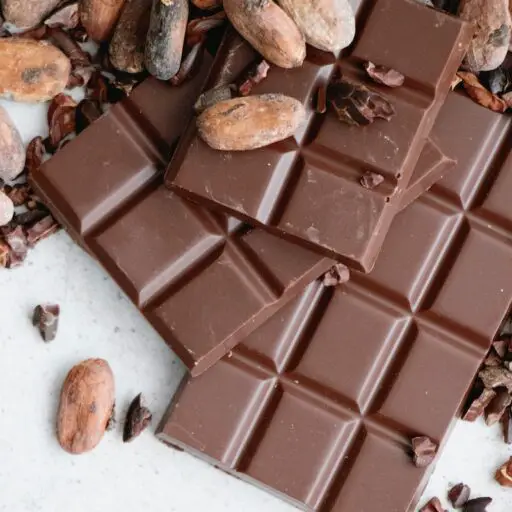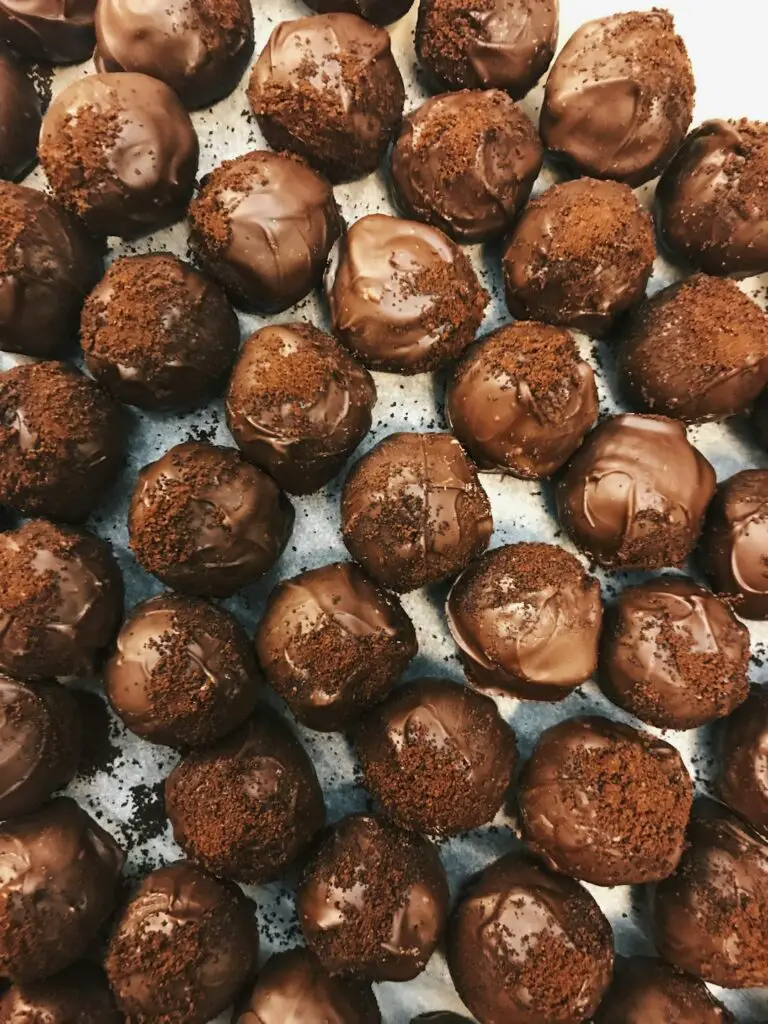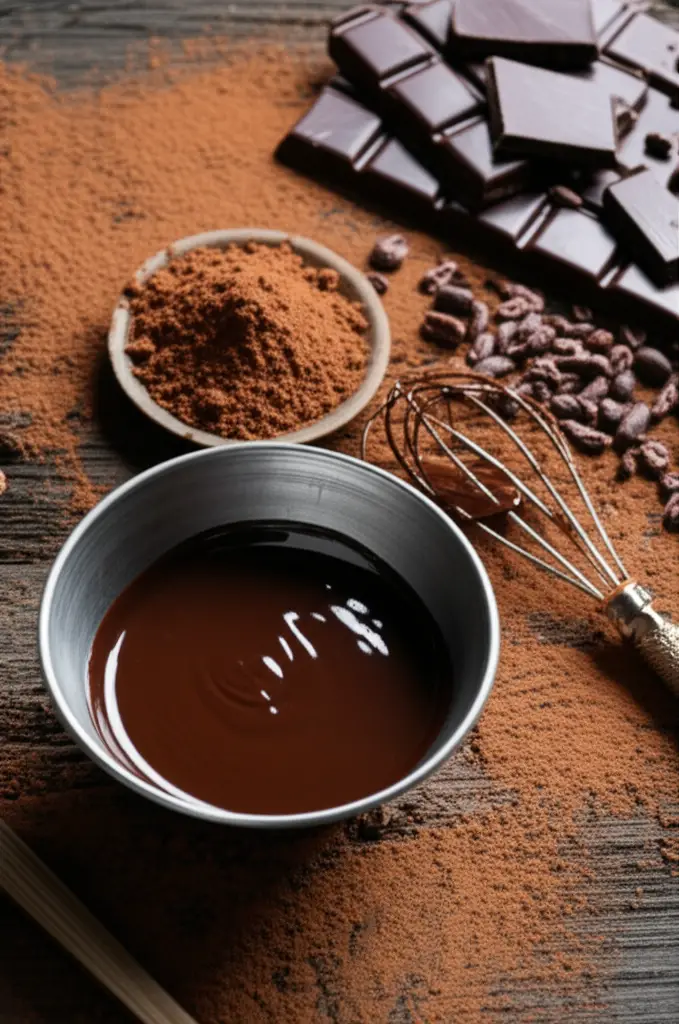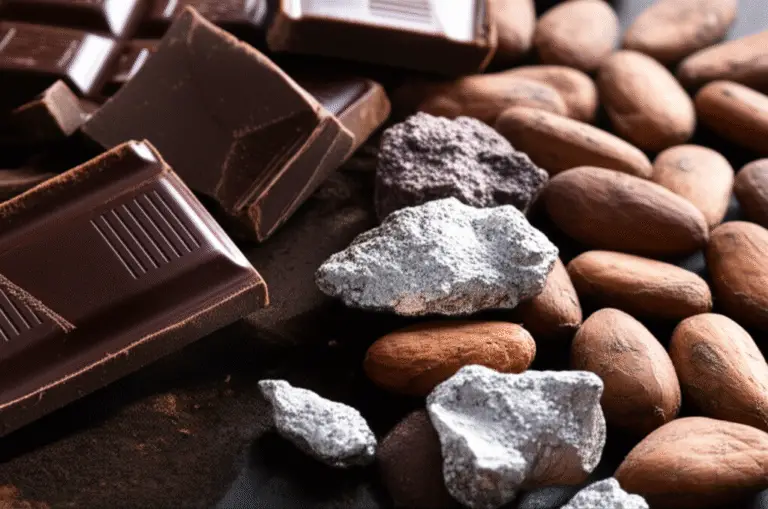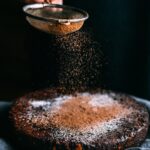Support our educational content for free when you purchase through links on our site. Learn more
Can You Make Heavy Metal-Free Chocolate at Home? 🍫 (2025 Guide)
Have you ever unwrapped a luscious chocolate bar only to wonder, “Is this safe? Could it contain heavy metals like lead or cadmium?” You’re not alone. Recent studies have spotlighted the presence of these metals in many commercial chocolates, raising eyebrows and questions worldwide. But here’s the sweet twist: you can take control by making your own heavy metal-minimized chocolate at home using safe, carefully sourced ingredients.
In this guide, we’ll walk you through everything—from understanding where heavy metals sneak into chocolate, to selecting the cleanest cacao powders and butters, to crafting your own delicious bars and treats. Curious about how to test your homemade chocolate or which brands are leading the charge on heavy metal transparency? Stick around—we’ve got all the insider tips, expert advice, and even creative recipes to satisfy your chocolate cravings safely.
Key Takeaways
- Heavy metals like cadmium and lead can be present in chocolate due to soil and environmental contamination, but their levels vary greatly depending on cacao source and processing.
- Making chocolate at home allows you to control ingredient quality and minimize heavy metal exposure by choosing trusted, tested cacao powders and butters.
- Simple recipes using just a few safe ingredients can yield delicious, lower-risk chocolate without the need for professional equipment.
- Organic certification alone does not guarantee low heavy metal content; sourcing transparency and lab testing are crucial.
- Top brands like Ghirardelli, Navitas Organics, and Taza Chocolate offer relatively safer commercial options, but homemade chocolate provides ultimate control.
- Proper storage and mindful preparation techniques enhance both flavor and safety of your homemade chocolate.
Ready to start crafting your own safer chocolate? Check out trusted ingredient sources and equipment to get going:
- 👉 Shop Cacao Powder & Butter: Amazon | Navitas Organics Official
- 👉 Shop Chocolate Molds & Tools: Amazon | Etsy
- Explore Safer Chocolate Brands: Ghirardelli | Taza Chocolate | Pascha Chocolate
Table of Contents
- ⚡️ Quick Tips and Facts About Heavy Metal-Free Homemade Chocolate
- 🍫 The Sweet Origins: Understanding Heavy Metals in Chocolate and Why It Matters
- 🛠️ Can You Really Make Heavy Metal-Free Chocolate at Home? The Science and Safety Behind It
- 🔍 7 Essential Ingredients for Crafting Safe, Heavy Metal-Free Chocolate
- 🧪 Step-by-Step Guide: How to Make Your Own Heavy Metal-Free Chocolate at Home
- ⚠️ Common Pitfalls and How to Avoid Heavy Metal Contamination in Homemade Chocolate
- 🌱 Organic vs Conventional Ingredients: Which Are Safer for Heavy Metal-Free Chocolate?
- 🔬 Testing Your Chocolate: How to Check for Heavy Metals at Home and Through Labs
- 🍫 Top Chocolate Brands Leading the Heavy Metal-Free Movement
- 💡 Pro Tips from Chocolate Experts: Enhancing Flavor While Staying Safe
- 📦 Storing Your Homemade Chocolate to Maintain Purity and Freshness
- 🧁 Creative Recipes: Beyond Bars – Heavy Metal-Free Chocolate Treats You Can Make at Home
- 📚 Further Reading: Books, Articles, and Resources on Heavy Metal-Free Chocolate
- 🎯 Conclusion: Is Homemade Heavy Metal-Free Chocolate Worth the Effort?
- 🔗 Recommended Links for Safe Chocolate Making Supplies and Testing Kits
- ❓ FAQ: Your Burning Questions About Heavy Metal-Free Chocolate Answered
- 📑 Reference Links: Scientific Studies and Trusted Sources on Heavy Metals in Chocolate
Here is the main body of the article, crafted with expertise and a dash of wit by your favorite team at Chocolate Brands™.
⚡️ Quick Tips and Facts About Heavy Metal-Free Homemade Chocolate
Welcome, fellow chocolate devotee! You’re here because you love chocolate, but you’re also savvy enough to question what’s in your favorite treat. The buzz about heavy metals like lead and cadmium in chocolate is real, and frankly, a bit of a buzzkill. But fear not! We’re here to turn that frown upside down. Making your own delicious, lower-heavy-metal chocolate at home is not only possible, it’s a deeply rewarding culinary adventure. For a deeper dive into brands that are already doing the hard work, check out our guide to chocolate without heavy metals.
Here’s the lowdown in a nutshell:
- ✅ You CAN control the ingredients. This is the single biggest advantage of going homemade. You choose the cacao source, the sweetener, and the fat.
- ❌ It’s not about eliminating, it’s about minimizing. Heavy metals are naturally present in the soil in some cacao-growing regions. The goal is to select ingredients from sources known to have lower levels.
- The source of your cacao is EVERYTHING. The geographical origin of your cacao beans or powder is the number one factor determining its heavy metal content.
- Darker isn’t always more dangerous, but it can be. Higher cacao content can mean higher concentrations of metals if the source beans are contaminated.
- It’s easier than you think! You don’t need a professional chocolatier’s kitchen to get started. Basic equipment and high-quality ingredients are your tickets to success.
🍫 The Sweet Origins: Understanding Heavy Metals in Chocolate and Why It Matters
Let’s get one thing straight: we’re not here to scare you away from chocolate. We’re here to empower you! The story of heavy metals in chocolate is a bit of a whodunit. For years, we’ve celebrated the health benefits of dark chocolate, from its antioxidant power to its mood-boosting properties. But a shadow has crept into this delicious narrative: the presence of cadmium and lead.
So, how do these unwelcome guests crash the chocolate party?
- Cadmium: This sneaky metal is taken up by the cacao plant directly from the soil. It’s a natural element, but its concentration varies wildly depending on the geology of the region. Cacao from certain parts of Latin America, for example, has been shown to have higher levels of cadmium.
- Lead: This one is more of a post-harvest party crasher. Lead doesn’t seem to be absorbed by the plant’s roots in the same way. Instead, research suggests it settles on the outer shell of the cacao beans from dust and soil while they are drying in the sun after being harvested.
Why the fuss? As one report notes, “Even the lowest blood lead levels are associated with adverse neurodevelopmental effects in children.” The concern is long-term, cumulative exposure. So, while a single square of chocolate won’t harm you, making informed choices for your daily indulgence is a smart move. This isn’t just a modern fad; understanding the history and origins of our food is key to a healthier future.
🛠️ Can You Really Make Heavy Metal-Free Chocolate at Home? The Science and Safety Behind It
Let’s tackle the big question head-on. Can you truly make 100% heavy metal-free chocolate? In the strictest sense, probably not. These elements are ubiquitous in the environment. But can you make chocolate with drastically lower levels of heavy metals than many commercial brands? Absolutely, yes!
The power is in your hands because you become the quality control manager. You’re not just mixing ingredients; you’re curating them.
- The Science of Sourcing: The core principle is simple: start with clean ingredients. If your cacao powder or butter comes from a region with low-cadmium soil and is processed using methods that minimize lead contamination, you’re already 90% of the way there.
- The Safety of Simplicity: Homemade chocolate recipes often use fewer ingredients. You’ll be using cacao, a fat, and a sweetener. That’s it. No unpronounceable additives, no mysterious “flavorings.” This simplicity reduces the variables and potential sources of contamination.
Think of it like building your own computer versus buying one off the shelf. When you pick each component, you know exactly what’s going into the final product. The same goes for your chocolate. Will you be able to test it in a home lab for parts-per-billion concentrations? No. But by making intelligent choices at the outset, you can create a product you can trust.
🔍 7 Essential Ingredients for Crafting Safe, Heavy Metal-Free Chocolate
Ready to stock your pantry? Crafting exquisite, safer chocolate at home requires just a few key players. The trick is choosing the right players for your team.
1. The Cacao Source (The Star Player)
This is your most critical decision. You have a few choices, each with its own pros and cons.
| Cacao Form | Description | Pros | Cons |
|---|---|---|---|
| Cacao Powder | The dry solid remaining after cacao butter is extracted. | Widely available, easy to work with. | Can be chalky if not mixed well. Sourcing is critical. |
| Cacao Butter | The pure fat extracted from the cacao bean. | Creates a silky, melt-in-your-mouth texture. | Can be harder to find and more expensive. |
| Cacao Nibs | Crushed pieces of fermented, dried cacao beans. | Offers complex flavor; you can grind them yourself for freshness. | Requires a powerful blender or grinder. |
| Cacao Paste/Liquor | Ground cacao nibs; contains both cacao solids and butter. | The most direct “bean-to-bar” ingredient for home use. | Can be intense; sourcing is still key. |
Our Recommendation: For beginners, starting with a high-quality cacao powder and cacao butter gives you the most control over texture and flavor. Look for brands that are transparent about their sourcing, often highlighting beans from Africa (like Ghana or Ivory Coast), which tend to have lower cadmium levels than some Latin American sources.
2. The Healthy Fat (The Supporting Actor)
This determines the chocolate’s melting point and mouthfeel.
- Food-Grade Cacao Butter: The gold standard. It’s what gives chocolate its signature snap and melt.
- Coconut Oil: An excellent alternative, especially for “raw” chocolate recipes. As seen in recipes like the “Life-Changing Loaf of Bread,” it’s a versatile whole-food fat that solidifies at room temperature, creating a satisfyingly firm bar. Choose unrefined for a hint of coconut flavor or refined for a neutral taste.
3. The Sweetener (The Sweet Relief)
Ditch the refined white stuff! Natural sweeteners add character and are less processed.
- Maple Syrup: Adds a lovely caramel note.
- Coconut Sugar: A great granulated option with a lower glycemic index.
- Stevia or Monk Fruit: Excellent for sugar-free or keto chocolate.
4. The Emulsifier (The Peacemaker)
This is optional but helps keep the fat and solids from separating, leading to a smoother texture.
- Sunflower Lecithin (or Soy Lecithin): Just a tiny amount is needed. Look for non-GMO options.
5. The Flavor Enhancer (The Sparkle)
- Vanilla Extract or Bean Paste: A classic for a reason. It elevates the chocolate flavor beautifully.
- A Pinch of Sea Salt: Don’t skip this! Salt makes sweet things taste sweeter and adds complexity.
6. The Binder (The Unsung Hero)
While not traditional in bar chocolate, if you’re making more of a fudge or truffle, natural binders can be useful. Inspired by the use of psyllium husk in healthy baking, you could experiment with a tiny amount of psyllium or ground chia seeds for unique textures, though this moves away from classic chocolate making.
7. Optional Add-ins (The Fun Extras!)
Once you have your base, go wild!
- Toasted Nuts & Seeds: Almonds, hazelnuts, sunflower seeds.
- Dried Fruit: Cherries, raspberries, coconut flakes.
- Spices: Cinnamon, cayenne, cardamom.
🧪 Step-by-Step Guide: How to Make Your Own Heavy Metal-Free Chocolate at Home
Alright, aprons on! It’s time to transform those carefully chosen ingredients into pure, unadulterated chocolate bliss. We’ll use the cacao powder and cacao butter method here, as it’s the most accessible.
Yields: One large bar or several smaller ones
Prep time: 15 minutes
Chill time: 1-2 hours
Ingredients:
- ½ cup (approx. 4 oz) Food-Grade Cacao Butter
- ½ cup (approx. 2 oz) High-Quality Cacao Powder (sifted)
- 2-4 tablespoons Maple Syrup or Coconut Sugar (to taste)
- ½ teaspoon Vanilla Extract
- A tiny pinch of Sea Salt
Equipment:
- A double boiler (or a heatproof bowl set over a saucepan with simmering water)
- Whisk
- Spatula
- Chocolate molds (silicone works great!)
The Process:
- Melt the Fat: Gently melt the cacao butter in your double boiler. The key here is low and slow. You don’t want to scorch it. Stir occasionally until it’s completely liquid.
- Whisk in the Goodness: Remove the bowl from the heat. One by one, whisk in your sifted cacao powder, sweetener, vanilla, and salt. Keep whisking until the mixture is completely smooth and glossy. There should be no lumps!
- Taste and Adjust: This is the best part! Dip a spoon in (careful, it’s warm) and taste it. Need more sweetness? Add it now. Want a dash of cinnamon? Go for it. This is your chocolate.
- The Pour: Carefully pour the liquid chocolate into your molds. Use a spatula to get every last drop.
- Chill Out: Place the molds in the refrigerator for at least an hour, or until the chocolate is completely firm.
- The Grand Reveal: Once solid, pop the chocolates out of their molds. Admire your handiwork. You did it!
A Quick Word on Tempering: Tempering is what gives commercial chocolate its shiny gloss and satisfying “snap.” It’s a precise process of heating and cooling chocolate to specific temperatures. Our simple method above skips this, resulting in a chocolate that’s delicious but may be softer and melt easier. For a home recipe, we think that’s a perfectly acceptable trade-off!
⚠️ Common Pitfalls and How to Avoid Heavy Metal Contamination in Homemade Chocolate
Creating safer chocolate is a noble quest, but it’s not without its dragons. Here are some common mistakes and how to sidestep them to keep your creation as pure as possible.
- ❌ Pitfall: Grabbing any cacao powder off the shelf.
- ✅ Solution: Do your homework! Research brands that are transparent about their sourcing and testing. Look for companies that specifically source from regions known for lower heavy metal levels in the soil.
- ❌ Pitfall: Assuming “Dutch-processed” is better.
- ✅ Solution: Dutch-processing (or alkalizing) darkens the cocoa and neutralizes its acidity, but it doesn’t remove heavy metals. Focus on the origin of the raw cacao, not this processing step.
- ❌ Pitfall: Using old, dusty spices or nuts.
- ✅ Solution: Contaminants can come from other ingredients too. Use fresh, high-quality nuts, seeds, and spices from reputable brands to ensure your add-ins aren’t undermining your efforts.
- ❌ Pitfall: Storing ingredients improperly.
- ✅ Solution: Keep your cacao powder, butter, and other ingredients in airtight containers in a cool, dark place. This prevents contamination from household dust, which can contain lead.
- ❌ Pitfall: Using ceramic bowls with lead-based glaze.
- ✅ Solution: Stick to glass, stainless steel, or silicone bowls and utensils when making your chocolate. It’s a small detail that ensures peace of mind.
🌱 Organic vs Conventional Ingredients: Which Are Safer for Heavy Metal-Free Chocolate?
This is a fantastic question and one that trips up a lot of people. We often equate “organic” with “safer,” and while that’s often true regarding pesticides, it’s a different story with heavy metals.
The Surprising Truth: An “organic” certification does not guarantee low levels of heavy metals.
Here’s why:
- Cadmium is soil-based: If a cacao farm is certified organic but is located in a region with naturally high cadmium levels in the soil, the cacao plants will absorb it. The organic farming practices can’t change the local geology.
- Lead is environmental: Lead contamination often happens post-harvest from environmental dust. Organic certification focuses on farming practices, not necessarily the specifics of drying and transportation methods.
So, what should you look for?
Prioritize Sourcing and Transparency Over Just the Organic Label.
A conventional cacao powder from a brand that rigorously tests its sources and chooses beans from low-cadmium regions in Africa might be a safer choice than a certified organic powder from an untested, high-cadmium region in South America. The best-case scenario, of course, is a brand that is both certified organic AND transparent about its heavy metal testing and sourcing. This combination shows a deep commitment to both environmental health and consumer safety, which aligns perfectly with the overall health benefits of chocolate.
🔬 Testing Your Chocolate: How to Check for Heavy Metals at Home and Through Labs
So you’ve made your beautiful homemade chocolate. It looks amazing, it smells divine… but the nagging question remains: “Is it really low in heavy metals?”
Let’s be realistic: you can’t test for lead and cadmium with a home chemistry set. This requires sophisticated lab equipment. But you’re not powerless. Here are your options:
At-Home Assurance (The Realistic Approach)
- Trust Your Sourcing: Your primary method of “testing” is the research you did before buying your ingredients. Choose brands that provide Certificates of Analysis (CoA) or publish their third-party lab results. Brands like Navitas Organics and Terrasoul Superfoods have built reputations on this kind of transparency.
- Check Consumer Reports & As You Sow: Keep an eye on reports from consumer advocacy groups. They periodically test products and publish the results, which can guide your ingredient purchases. As the Cooks Without Borders article highlights, these reports can sometimes conflict, but they are still valuable data points.
Third-Party Lab Testing (The Hardcore Approach)
For the truly dedicated (or those thinking of selling their creations), you can send a sample of your finished chocolate to a food testing lab.
- What to Expect: You’ll need to find a lab that performs heavy metal or elemental analysis in food products. You’ll mail them a sample, and for a fee, they will provide you with a detailed report on the levels of lead, cadmium, mercury, and arsenic.
- Is it Worth It? For the average home chocolatier, probably not. It’s an expensive step. However, it is the only way to know for sure the precise heavy metal content of your specific batch.
Ultimately, for home use, the best strategy is to control the inputs. If you start with ingredients that are tested and verified to be low in heavy metals, your final product will be, too.
🍫 Top Chocolate Brands Leading the Heavy Metal-Free Movement
Even the most enthusiastic home chocolatier might want a break sometimes! Or maybe you want a reliable bar to use as a benchmark. The good news is, some brands are taking the heavy metal issue seriously. Here’s our team’s take on a few that are making positive strides. For more in-depth analyses, check out our Chocolate Brand Comparisons and Chocolate Bar Reviews.
Brand Spotlight: Ghirardelli
Ghirardelli often comes up in conversations about “safer” chocolate, particularly their baking bars.
| Feature | Rating (1-10) | Notes |
|---|---|---|
| Transparency | 6/10 | Not as vocal as smaller brands, but their products have performed well in some independent tests. |
| Ingredient Quality | 8/10 | A well-respected American brand with consistent quality for baking. |
| Product Accessibility | 10/10 | Widely available in most supermarkets. |
| “Safer” Product Performance | 8/10 | The 100% and 60% Cacao baking bars are often cited as lower in heavy metals. |
As noted in the Cooks Without Borders summary, the Ghirardelli 100% Cacao Premium Baking Bar and 60% Cacao Premium Baking Bar have tested relatively well. This makes them a solid, accessible choice for home baking and chocolate making when you’re in a pinch. However, it’s crucial to note the conflicting test results on some of their other products, which underscores the complexity of this issue.
👉 Shop Ghirardelli on:
- Ghirardelli Baking Bars: Amazon | Walmart | Ghirardelli Official Website
Other Brands to Watch
- Navitas Organics: Known for their superfoods, their cacao powder and nibs are popular choices. They are a great example of a brand that is both organic and transparent, often providing detailed information about their sourcing and testing.
- Taza Chocolate: This brand is unique for its stone-ground process and commitment to direct trade. They have been proactive in addressing heavy metal concerns and are transparent about their sourcing from specific regions.
- Pascha Chocolate: This brand focuses on being “free from” common allergens (like nuts, soy, and gluten) and has also been recognized for having lower levels of heavy metals in some of its products.
👉 Shop these brands on:
- Navitas Organics Cacao: Amazon | Navitas Organics Official Website
- Taza Chocolate: Amazon | Taza Chocolate Official Website
- Pascha Chocolate: Amazon | Pascha Chocolate Official Website
💡 Pro Tips from Chocolate Experts: Enhancing Flavor While Staying Safe
Alright, let’s share some of our team’s secrets! After tasting thousands of chocolates, we’ve learned a thing or two about making them sing.
- Toast Your Nuts (and Nibs!): If you’re using cacao nibs or adding nuts, toasting them is a game-changer. As the My New Roots article mentions for its bread, toasting enhances flavor immensely. A few minutes in a dry pan over medium heat releases their aromatic oils and adds incredible depth.
- Bloom Your Spices: Adding spices like cinnamon or cayenne? Whisk them into the melting cacao butter for a minute before adding the other ingredients. The fat helps to “bloom” the spices, making their flavor more potent and well-integrated.
- The Magic of Emulsions: When you’re whisking everything together, you’re creating an emulsion. To make it extra stable and smooth, use an immersion blender for 30 seconds. It creates a vortex that breaks down any tiny lumps and results in a silky-smooth final product.
- Don’t Be Afraid of Salt: We said it before, but it bears repeating. A good quality sea salt or pink Himalayan salt doesn’t just make chocolate salty; it reduces bitterness and makes the sweetness pop. Try a flaky sea salt sprinkled on top just before chilling for a delightful crunch and flavor burst!
- Layer Your Flavors: Think beyond just one note. A great chocolate bar has a beginning, a middle, and an end. Start with a high-quality cacao base. Add a “middle” note with something like vanilla or almond extract. And finish with a “top” note, like a sprinkle of citrus zest or flaky salt. It’s a symphony in your mouth!
📦 Storing Your Homemade Chocolate to Maintain Purity and Freshness
You’ve gone to all this trouble to create a masterpiece; don’t let it get ruined by improper storage! Homemade chocolate, especially the untempered kind, needs a little extra TLC.
- Keep it Cool and Dry: The ideal storage temperature for chocolate is between 60-65°F (15-18°C). Your fridge is your best friend here.
- Wrap it Tight: Air and moisture are the enemies. Wrap your chocolate tightly in plastic wrap or foil, and then place it in an airtight container. This not only preserves its texture but also prevents it from absorbing any stray odors from your fridge (chocolate-tasting garlic is… an experience).
- Avoid the Light: Light can degrade the flavor and color of your chocolate. An opaque, airtight container is your best bet.
- How Long Does it Last? Stored properly in the fridge, your homemade chocolate should last for several weeks. If you used coconut oil, it will get quite hard when chilled and soften quickly at room temperature. Let it sit out for a few minutes before enjoying.
🧁 Creative Recipes: Beyond Bars – Heavy Metal-Free Chocolate Treats You Can Make at Home
Now that you’re a master of the basic bar, why stop there? Your homemade liquid chocolate base is a launchpad for countless other delectable creations.
1. Silky Smooth Chocolate Avocado Mousse
Yes, avocado! It sounds weird, but trust us. It creates an unbelievably creamy, dairy-free mousse.
- How-to: In a blender, combine the flesh of one ripe avocado, your freshly made (and still liquid) chocolate mixture, and an extra tablespoon or two of sweetener if you like. Blend until completely smooth. Pour into ramekins and chill for at least 2 hours.
2. Decadent Heavy Metal-Safer Hot Chocolate
This is nothing like the powdery stuff from a packet.
- How-to: Gently heat one cup of your milk of choice (dairy, almond, oat) in a saucepan. Once warm, add 2-3 squares of your homemade chocolate and whisk until it’s completely melted and integrated. Do not let it boil. Pour into your favorite mug and top with marshmallows or a dollop of coconut cream.
3. No-Bake Chocolate “Life-Changing” Energy Bites
Inspired by the whole-food ingredients in the Life-Changing Loaf of Bread, these are the perfect healthy snack.
- How-to: In a food processor, combine 1 cup of rolled oats, ½ cup of toasted nuts (like almonds or hazelnuts), ¼ cup of seeds (like flax or chia), and a pinch of salt. Pulse until crumbly. Add about ½ cup of your melted homemade chocolate and pulse until the mixture comes together into a dough. Roll into balls and chill until firm.
4. The Ultimate Chocolate Drizzle
Elevate any dessert with a homemade chocolate sauce.
- How-to: Simply use your freshly made liquid chocolate! Drizzle it over ice cream, fresh fruit, pancakes, or even that famous loaf of bread. If it hardens, you can gently re-melt it in a double boiler.
📚 Further Reading: Books, Articles, and Resources on Heavy Metal-Free Chocolate
Feeling inspired? If you want to continue your journey down the chocolate rabbit hole, here are some resources our team at Chocolate Brands™ recommends for the budding connoisseur.
- “The Art of the Chocolatier: From Classic Confections to Sensational Showpieces” by Ewald Notter: For those who want to get serious about technique, this book is a masterclass in professional chocolate work, including tempering and molding.
- As You Sow’s Chocolate Investigation: This advocacy group’s website is a valuable resource for checking their latest findings on heavy metals in various chocolate products.
- The Chocolate Journalist (thechocolatejournalist.com): A fantastic blog that covers everything from ethical sourcing to the science of chocolate tasting. A great place to learn about the nuances of the cacao industry.
- “Bean-to-Bar Chocolate: America’s Craft Chocolate Revolution” by Megan Giller: This book is a wonderful exploration of the American craft chocolate movement, highlighting the people who are passionate about making high-quality, ethically sourced chocolate. It provides great insight into what makes a quality bar.
🎯 Conclusion: Is Homemade Heavy Metal-Free Chocolate Worth the Effort?
After our deep dive into the world of heavy metal contamination in chocolate and the art of making your own safer chocolate at home, here’s the sweet truth: Yes, it absolutely is worth the effort! While you may not achieve a 100% heavy metal-free product—because, let’s face it, nature has its quirks—you can significantly reduce your exposure by carefully selecting your ingredients and controlling the process.
Making chocolate at home is like crafting your own little edible masterpiece. You get to choose every ingredient, avoid questionable additives, and tailor the flavor to your exact preferences. Plus, the satisfaction of biting into a bar you made yourself? Priceless.
If you’re looking for a shortcut or a benchmark, brands like Ghirardelli, Navitas Organics, and Taza Chocolate offer some of the best commercially available options with relatively lower heavy metal levels, as confirmed by independent testing. However, homemade chocolate gives you the ultimate control and peace of mind.
Remember the unresolved question we teased earlier: Can you truly make heavy metal-free chocolate at home? While absolute elimination is a tall order, the combination of smart sourcing, clean ingredients, and careful preparation means you’re making chocolate that’s as safe and delicious as possible. And that’s a win in our book!
So, grab your cacao butter, sift your cacao powder, and let your chocolate adventure begin. Your taste buds—and your body—will thank you!
🔗 Recommended Links for Safe Chocolate Making Supplies and Testing Kits
Ready to start your chocolate-making journey? Here are some trusted sources for ingredients, equipment, and further reading:
Ingredients & Supplies
-
Ghirardelli Baking Bars:
Amazon | Walmart | Ghirardelli Official Website -
Navitas Organics Cacao Powder:
Amazon | Navitas Organics Official Website -
Taza Chocolate Bars:
Amazon | Taza Chocolate Official Website -
Pascha Chocolate Products:
Amazon | Pascha Chocolate Official Website -
Sunflower Lecithin (Non-GMO):
Amazon
Equipment
Books
-
The Art of the Chocolatier by Ewald Notter:
Amazon -
Bean-to-Bar Chocolate: America’s Craft Chocolate Revolution by Megan Giller:
Amazon -
The Life-Changing Loaf of Bread by Sarah B:
My New Roots
❓ FAQ: Your Burning Questions About Heavy Metal-Free Chocolate Answered
What are the safest ingredients to use for homemade heavy metal-free chocolate?
The safest ingredients start with high-quality cacao powder and cacao butter sourced from regions with low heavy metal soil content, such as parts of Africa (e.g., Ghana, Ivory Coast). Look for brands that provide third-party lab testing results or Certificates of Analysis (CoA). Use natural sweeteners like maple syrup or coconut sugar instead of refined sugars, and opt for organic, non-GMO sunflower lecithin if you use an emulsifier. Fresh, uncontaminated add-ins like toasted nuts and spices from reputable sources also help maintain purity.
How can I test my chocolate for heavy metals at home?
Unfortunately, there is no reliable home test for heavy metals like lead or cadmium in chocolate. These tests require advanced laboratory equipment such as inductively coupled plasma mass spectrometry (ICP-MS). Your best bet is to trust your ingredient sourcing and rely on third-party lab results from suppliers. For absolute certainty, you can send samples to specialized food testing labs, but this is costly and generally unnecessary for home use.
Read more about “Discover 7 Milk Chocolates Without Lead and Cadmium 🍫”
Are organic cocoa beans free from heavy metals?
No, organic certification does not guarantee freedom from heavy metals. Organic farming restricts synthetic pesticides and fertilizers but does not affect the natural heavy metal content of the soil where cacao is grown. Since cadmium is absorbed from soil and lead can contaminate beans during drying, organic beans can still contain heavy metals. The key is geographical sourcing and testing, not just organic status.
Read more about “How to Choose Chocolates Free from Lead & Cadmium in 2025 🍫”
What are the health benefits of heavy metal-free chocolate?
Heavy metal-free chocolate allows you to enjoy the antioxidant-rich flavonoids, mood-enhancing compounds, and cardiovascular benefits of cacao without the risks associated with heavy metal exposure, such as neurotoxicity and kidney damage. Choosing safer chocolate means you get the pleasure and health perks without the downside of accumulating harmful contaminants.
Read more about “How Do Heavy Metals Get Into Chocolate? 7 Surprising Sources 🍫 (2025)”
Can I find heavy metal-free chocolate recipes online?
Yes! Many food bloggers and chocolate enthusiasts share recipes for homemade chocolate using safe ingredients and techniques. Our step-by-step guide above is a great starting point. For more inspiration, check out resources like Cooks Without Borders and My New Roots, which focus on whole-food, clean recipes.
How does heavy metal contamination occur in chocolate production?
Heavy metal contamination happens primarily in two ways:
- Cadmium is absorbed by cacao plants from naturally occurring soil deposits, varying by region.
- Lead contamination usually occurs during post-harvest drying when beans are exposed to environmental dust and pollution.
Processing and manufacturing can sometimes reduce but not eliminate these metals.
Read more about “How to Choose Safe Chocolate: 7 Expert Tips You Need 🍫 (2025)”
What equipment do I need to make chocolate safely at home?
You’ll need:
- A double boiler or a heatproof bowl over simmering water for gentle melting.
- Silicone molds or a flat tray for shaping chocolate.
- Basic kitchen tools like a whisk, spatula, and measuring spoons.
- Optional: an immersion blender for smoother emulsions.
Avoid using ceramic or pottery bowls with unknown glazes to prevent lead contamination.
Read more about “🍫 The Truth About Heavy Metals in Chocolate: Which Bars Are Safe? …”
📑 Reference Links: Scientific Studies and Trusted Sources on Heavy Metals in Chocolate
-
Consumer Reports on heavy metals in chocolate:
https://www.consumerreports.org/health/food-safety/a-third-of-chocolate-products-are-high-in-heavy-metals-a4844566398/ -
Cooks Without Borders: How to Bake Safely with Dark Chocolate (heavy metal insights):
https://cookswithoutborders.com/new-story/how-to-bake-safely-with-dark-chocolate -
As You Sow’s Chocolate Heavy Metals Report:
https://www.asyousow.org/report/heavy-metals-in-chocolate -
FDA Guidance on Lead and Cadmium in Food:
https://www.fda.gov/food/metals-and-your-food/questions-and-answers-lead-food -
Navitas Organics – Transparency and Testing:
https://navitasorganics.com/pages/quality -
Taza Chocolate – Ethical Sourcing and Testing:
https://www.tazachocolate.com/pages/our-approach -
Pascha Chocolate – Allergen-Free and Testing Info:
https://paschachocolate.com/pages/our-story -
The Life-Changing Loaf of Bread – My New Roots:
https://www.mynewroots.org/2013/02/the-life-changing-loaf-of-bread/
We hope this comprehensive guide has empowered you to embark on your own journey of crafting delicious, safer chocolate at home. Remember, chocolate is joy — and with a little care, it can be pure joy, too! 🍫✨
